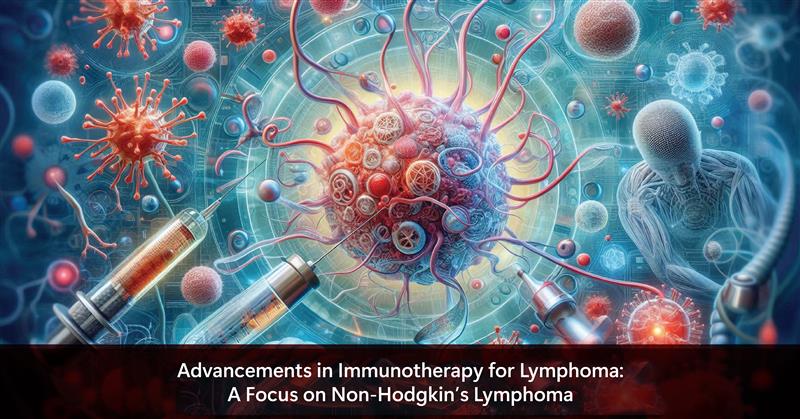Introduction
NHL is a complex category of diseases that, grouped under a common title, are considered a type of blood cancer and can be subdivided into hundreds of variants that are quite different from one another. In the past few decades, NHL has been highly advanced, especially with the development of immunotherapy. It has provided a new lease on life as it were to many people, or in medical terms, has significantly altered the outlook or prognosis for many patients where orthodox medicine has failed. Immunotherapy is a form of treatment that uses the patient’s immune system to identify and eradicate cancer cells; in NHL, immunotherapy has been exceptionally revolutionary. In this article, the author goes further into explaining immunotherapy in NHL, more so the CAR T cell therapy, biomarkers, and other surfaces in managing the complexities of the resistant forms of NHL.
The Role of CAR T-Cell Therapy in NHL
Among the current principal advances in the treatment of NHL is CAR T-cell therapy. This is called chimeric antigen receptor T-cell or CAR T-cell therapy: a new method of treatment that entails re-programming a patient’s T cells to attack cancerous cells directly. CAR T-cell therapy, especially in B-cell neoplasia, has been successful on a large scale. Specifically, therapies targeting CD19+ CAR T-cells have become highly effective in the treatment of a variety of NHL subtypes, among which are DLBCL, follicular, and mantle cell lymphoma.
The principle of treating CAR T-cells is based on guiding the patient’s modified T cells to recognize and kill those cancer cells displaying the CD19 antigen, which is found on the surface of a range of B-cell lymphomas. People who have not responded to standard-of-care therapies, including chemotherapy and stem cell transplantation, have slightly had remission survival rates after they underwent CAR T-cell therapy. The overall response rates (ORRs) have therefore been good, and many patients have, for example, achieved complete remission. Nevertheless, as with the vast majority of treatments, it is not free of difficulties, or more specifically, related to the challenge of CRS and neurotoxicity.
Cytokine Release Syndrome: A Manageable Complication
Cytokine release syndrome is one of the most frequent and, at the same time, severe side effects linked to CAR T-cell therapy. It occurs from the discharge of cytokines in the bloodstream, and the increase may result in systemic inflammation as well as the failure of multiple organs if the release is not regulated. Nevertheless, CRS is rather tolerable and can effectively be addressed if intervened early enough. The identification of predictive biomarkers has played an important role in the matter; clinicians have been able to prevent the development of CRS, thus the prescription of tocilizumab, an anti-IL-6 receptor antibody.
Furthermore, it was established that the severity of CRS can be linked to specific clinical biomarkers, as well as the level of cytokines in the IL-6 and IFN-γ groups. The tracking of these should enable healthcare practitioners to modify the management strategies, thereby lessening the severity of CRS and enhancing the results of the interventions. Such an opportunity to forecast and control CRS has made CAR T-cell therapy possible for more NHL patients.
Managing Neurotoxicity in CAR T-Cell Therapy
Neurotoxicity is another major complication of CAR T-cell therapy. Other than CRS, neurotoxicity. L-asparaginase is known to cause this condition that may be characterized by confusion, seizures, or even coma, through the systemic inflammation that is likely to be caused by the therapy. Similarly, further attention to neurotoxicity is paid, and the measures to reduce its impact are being adjusted with time, as is the case with CRS.
Outcomes of studies have shown that there is a possibility that the development of neurotoxicity might be associated with the same markers that cause CRS, and therefore the two are related complications. From this realization, there has been a formulation of a combined management approach that deals with both conditions at the same time. For instance, the application of corticosteroids and other immunosuppressive agents has been investigated in attempts to mitigate the inflammatory processes resulting in neurotoxicity, hence enhancing the safety of CAR T-cell therapy.
